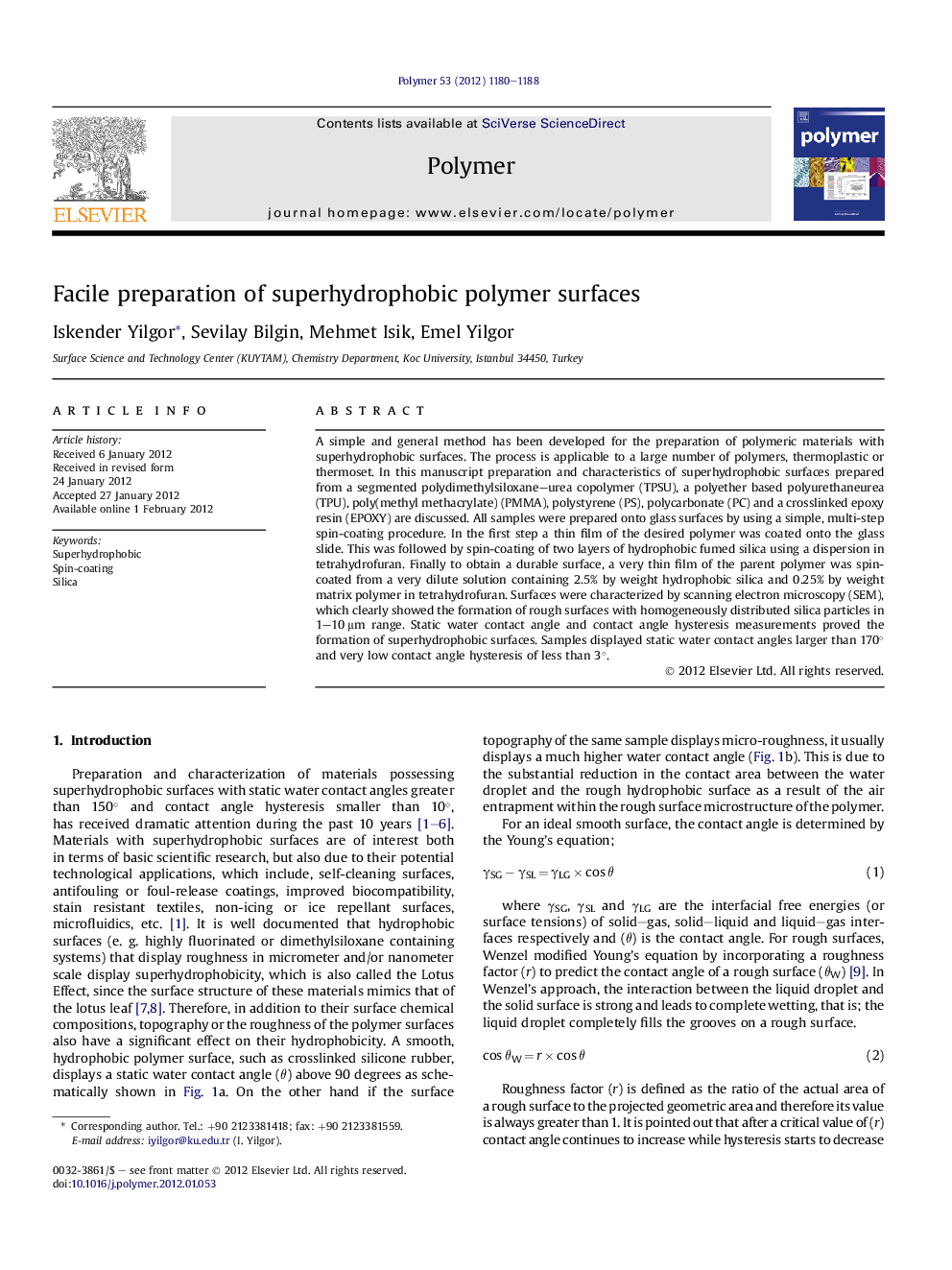| Article ID | Journal | Published Year | Pages | File Type |
|---|---|---|---|---|
| 5182972 | Polymer | 2012 | 9 Pages |
A simple and general method has been developed for the preparation of polymeric materials with superhydrophobic surfaces. The process is applicable to a large number of polymers, thermoplastic or thermoset. In this manuscript preparation and characteristics of superhydrophobic surfaces prepared from a segmented polydimethylsiloxane-urea copolymer (TPSU), a polyether based polyurethaneurea (TPU), poly(methyl methacrylate) (PMMA), polystyrene (PS), polycarbonate (PC) and a crosslinked epoxy resin (EPOXY) are discussed. All samples were prepared onto glass surfaces by using a simple, multi-step spin-coating procedure. In the first step a thin film of the desired polymer was coated onto the glass slide. This was followed by spin-coating of two layers of hydrophobic fumed silica using a dispersion in tetrahydrofuran. Finally to obtain a durable surface, a very thin film of the parent polymer was spin-coated from a very dilute solution containing 2.5% by weight hydrophobic silica and 0.25% by weight matrix polymer in tetrahydrofuran. Surfaces were characterized by scanning electron microscopy (SEM), which clearly showed the formation of rough surfaces with homogeneously distributed silica particles in 1-10 μm range. Static water contact angle and contact angle hysteresis measurements proved the formation of superhydrophobic surfaces. Samples displayed static water contact angles larger than 170° and very low contact angle hysteresis of less than 3°.
Graphical abstractDownload full-size image
